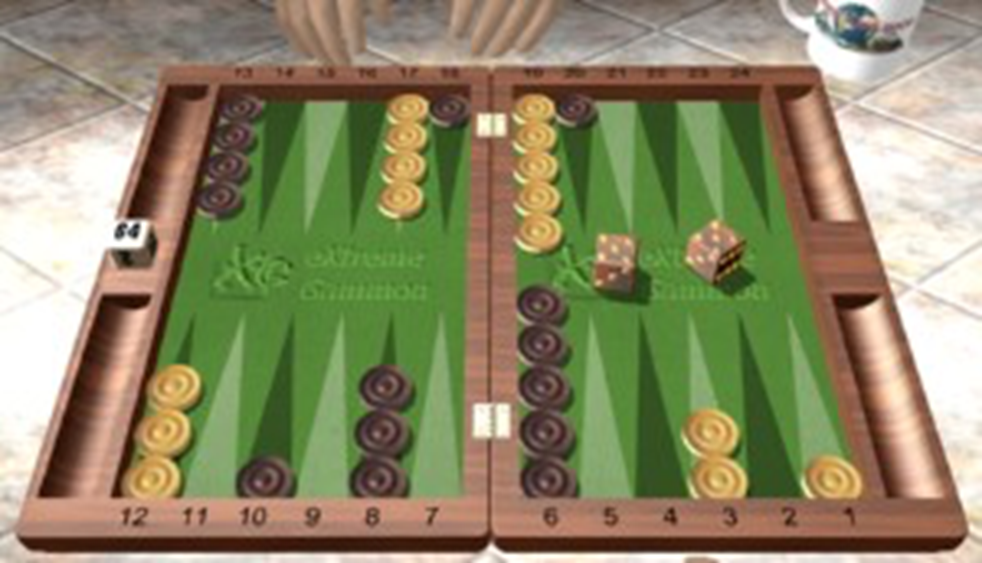This week’s problem illustrates how challenging an early game decision can be, especially when we are dealing with doubles. In this case, Black has rolled double 5’s and has many interesting choices. Among the most important considerations for black are the race, exposure of blots that the opponent may hit on a subsequent roll, and the development of a good structure. While there are many theoretical options, let’s examine the merits of a few of the more reasonable candidates. (Please note the numbered spaces on the board and how this is used in the notation. An asterisk denotes a hit, and a number in parenthesis indicates when more than one checker is being moved.)
20/5, 10/5
This play makes the valuable five-point but does leaves a checker exposed on the 18-point. Although the five-point is an excellent improvement in structure this play will allow white to counterattack on the 18-point (white’s bar point) which is a point white would very much like to make to begin the formation of a prime.
20/10, 6/1(2)*
This play attacks the checker on the one-point and creates an opportunity for white to stay on the bar with 4 rolls (6-6,1-1 and 1-6). This distraction may assist black in bringing their remaining checkers to safety. In general, you do not want to put your checkers too deep in your board in the early game as it can limit your options at later stages, but there can be exceptions.
20/10,18/8
This is the cleanest play as it does not leave any blots and positions black to make additional structure on the next roll with a significant lead in the race (134 pips vs 169 pips). With such a strong racing lead, black will be happy to avoid additional blot hitting if possible. While there is still potentially quite a bit of contact left in this game, black has stabilized his position for the moment and is poised to add additional important blocking points.
The correct play is deemed to be the choice that yields the greatest number of expected points on average. When we properly weigh the distribution of wins, losses, and gammons we can get an idea of which play is best. Although this can often be a very difficult task over the board, we fortunately have a very powerful neural net called XG (extremegammon.com) when it comes to post game analysis.
XG analysis confirms that 20/10,18/8 is superior to the alternatives by producing the greatest number of expected points for black. On average, by making the correct play, black will net about 0.07 more points vs playing 20/5,10/5, and 0.200 more points vs 20/10,6/1(2)*. These differences may not seem very significant, but such difficult choices occur often in backgammon, and they can add up over the course of a long game or match.

Frank is a two-time winner of the Backgammon World Championship in Monte Carlo and current holder of the title. He is a strategic consultant for professional sports teams, and within the sports betting and gaming industries. His work in decision science, critical thinking and sports analytics has been featured in many major news media outlets including ESPN, NFL Network, the New York Times, Fox Sports, Esquire, the Ringer and Showtime. He proudly serves as the co-director of the San Diego Backgammon Club. Learn more: https://frankfrigo.com/


20/5, 10/5.
Jon,
2nd best, read the analysis to see why 20/10,18/10 is a bit better.